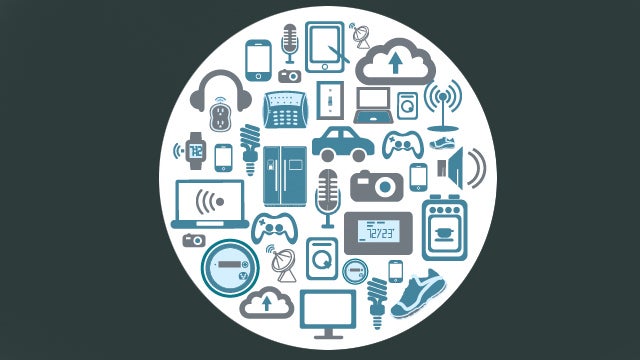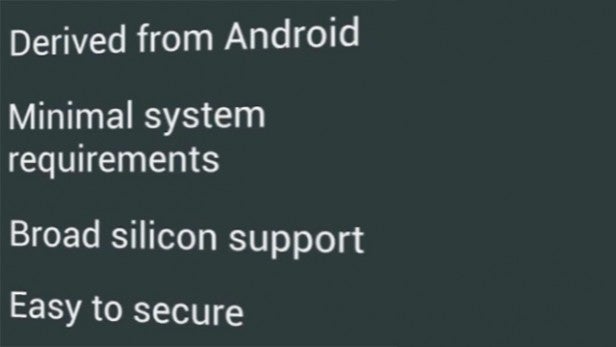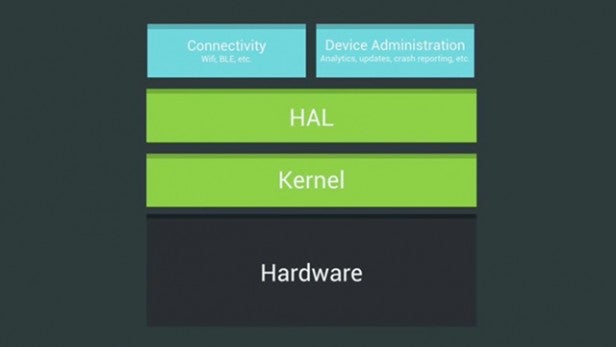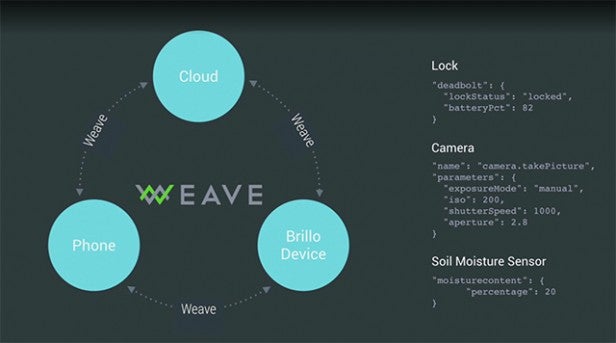What are Project Brillo and Google Weave?

Unpacking the IoT
With every new movement in tech comes a whole lot of jargon. One of the biggest offenders of recent years is the Internet of Things. By itself, it means nothing, and we doubt whether your technophobic auntie will ever ‘get’ it.
However, Project Brillo and Google Weave are what will turn it from technobabble into a reality. They’ll put it in your auntie’s house, without her needing to worry about how it works. These systems will become the Google backbone of the Internet of Things.
And if you think IoT is a horrible buzzword, we’re talking about your home getting a smidgen of smartphone style: smart locks, Wi-Fi ovens and clever light bulbs, to add to the smart thermostats you may well have heard of already.
Google announced Project Brillo and Google Weave at I/O 2015, and we’re going to look a bit closer at what each of them really means, and what they’ll do.
READ ALSO: 9 crazy smart home gadgets you didn’t know existed
What is Project Brillo?
Is Project Brillo really named after a scouring pad? That’s right. While it sounds a bit weird, Google explained that it liked the metaphor of Project Brillo really stripping down Android to its basics. Hence Brillo.
Project Brillo is an Android-based platform, the software that Google wants to end up powering the Internet of Things. That means it’ll end up in all sorts of smart home devices. Within a few years just about every appliance you can think of will have a smart equivalent, from coffee machines and microwaves to ovens and door locks.
Naturally, most of these aren’t going to have powerful processors and loads of RAM to work with. Most won’t even have screens designed to display the breadth of their smart capabilities. As such, Project Brillo needs to be very ‘light’, very undemanding.
Google singled out four priorities for the system. First, it’s ‘derived from Android’. This makes sense as in the future Google wants us to be using Android phones to control our smart appliances (in time we imagine you’ll be able to use iPhones too).

Next, it must have ‘minimal system requirements’. This one is obvious: if the IoT revolution is really going to hit the mainstream, it can’t rely solely on flashy hardware with (unnecessarily) fast CPUs.
Google also highlights ‘broad silicon support’ as a priority. This is again to broaden the flexibility, to let manufacturers use chipsets from a wide variety of chip makers, whether it’s a smartphone favourite like Qualcomm or a (now) lesser namer like Texas Instruments. Again, this will lower the price floor for supported devices.
Last, and one of the most important elements, Google says Project Brillo will be ‘easy to secure’. This is perhaps the most critical of all these key aims. As this software is going to end up in our homes, potentially by the end of the year, it needs to be very secure.
You can bet we’ll see a few home invasion movies pop up over in the next 12 months or so on this very topic.
Here’s a diagram Google used during I/O 2015 to show exactly how simple Project Brillo is:

It lacks the top level parts that let you interact directly with Android as we know it. It can’t run apps directly, and doesn’t have the kind of libraries you get with the ‘full blood’ Android. But this is exactly as it should be.
What is Google Weave?
It may seem like that’s all we need, right? We have our platform, and that’ll talk to our phones and tablets to let us control IoT devices in our houses, cars, wherever.
Well Google could have stopped there, but at I/O 2015 it also talked about the specific language that developers will use to talk to Brillo devices. It’s called Weave.
While as people that will just buy IoT gadgets in the future, we don’t have to worry about Weave too much, it’s very interesting if you’re thinking about getting more involved. Or finding about how the things work.
Weave is the library of terms and commands that will be used universally among supported devices. It’s a common language for IoT devices and developers will be able to submit their own terms to become part of the language. It’s what Google no-doubt wants to become the standard across the entire industry.
Apple may have a few words to say about that.

One other interesting bit of info is exactly how Weave will be used to communicate with your phone, or whatever is controlling your smart IoT device. As with Chromecast, the communication isn’t just direct, there’s a constant connection with the cloud from your smart home device too. It’s not as simple as you might initially assume.
This will mean that if your phone loses connection for some reason, your IoT device won’t be left stranded, and in some cases it’ll minimise battery strain on your phone/tablet.
What devices will use this stuff?
The most successful IoT-style devices to date are smart thermostats. Nest is perhaps the biggest name in this business, and Google now actually owns the company. It bought Nest for $3.2 back in 2014, a precursor to what’s going on right now.
READ ALSO: Nest vs Hive
The inception of Brillo and Weave likely comes from the ‘Works with Nest’ platform that also launched last year. This was an incentive to get more kinds of home devices up and running, and it worked pretty well. There are quite a few ‘works with Nest’ things out there.
Google went as far as to say it had worked with the Nest team to bring out Brillo/Weave. Brillo and Weave are essentially the natural development of ‘works with Nest’. They may even be virtually the same thing, already.
So to look at what Brillo things we can expect in the future, the Works with Nest roster is our best resource. Here are a few of the categories already in it:
- smart locks
- security lights
- Philips Hue lights
- fans
- Mercedes Benz car UI
- washing machines
… and of course smart thermostats
When will Brillo gadgets come out?
The one snag is that as Brillo and Weave were announced at I/O 2015, you shouldn’t expect to see devices using these new bits of software all that soon. I/O 2015 is a Google conference for developers, not for people looking to buy stuff.
Google says a developer preview version of Brillo is going to be released in Q3 2015, with actual products likely to arrive in 2016. However, if the Nest system ends up being able to run Brillo in its current form, we’re likely to see it in action before even that.


